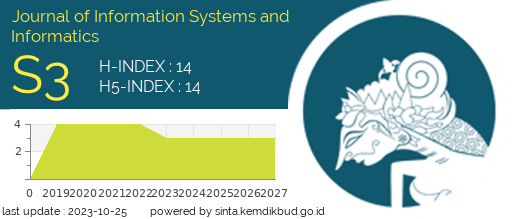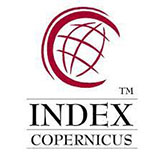Classification of Tomato Ripeness Based on Convolutional Neural Network Methods
Abstract
Sorting system for tomato is one of the important things to deploy to achieve better quality of tomato. Nowadays, many sorting system is done manually and this could spend a lot of time and become inefficient. One method can be implemented in the sorting system by using Convolutional Neural Network (CNN) method to classify the ripeness of tomatoes. The objective of this research is to classify the ripeness of tomatoes based on the color of tomatoes. There are three categories of color level such as green for raw tomato, turning for half-ripe tomato and red for ripe tomato. Research methodology of this research is data collection, data pre-processing and image maintenance, CNN model, and training data. The image used in this research are 1148 images. These images were taken manually using smartphone camera in outdoor environment. These images were used to build CNN model. The results of this research show that by testing 10 images of tomatoes achieved raw tomatoes close to 90%, ripe tomatoes close to 90% and half-ripe tomatoes close to 80%. Based on the results, CNN can be used as a good alternative in image classification tasks.
Downloads
References
J. Pardede, B. Sitohang, S. Akbar, and M. L. Khodra, “Implementation of Transfer Learning Using VGG16 on Fruit Ripeness Detection,” International Journal of Intelligent Systems and Applications, vol. 13, no. 2, pp. 52–61, Apr. 2021, doi: 10.5815/ijisa.2021.02.04.
Sanjaya Suwanto, “Penerapan Learning Vector Quantization Pada Pengelompokan Tingkat Kematangan Buah Tomat Berdasarkan Warna Buah,” Jurnal CoreIT, vol. 5, pp. 49–55, Dec. 2019.
T. Muhamad Hafiez et al., “Optimasi Klasifikasi Gambar Varietas Jenis Tomat Dengan Data Augmentation dan Convolutional Neural Network,” Smart Comp, vol. 11, no. 2, pp. 175–186, 2022.
R. Soekarta, N. Nurdjan, and A. Syah, “Klasifikasi Penyakit Tanaman Tomat Menggunakan Metode Convolutional Neural Network (CNN),” Insect (Informatics and Security): Jurnal Teknik Informatika, vol. 8, no. 2, pp. 143–151, Mar. 2023, doi: 10.33506/insect.v8i2.2356.
P. Das and J. P. S. Yadav, “Automated Tomato Maturity Grading System using CNN,” in 2020 International Conference on Smart Electronics and Communication (ICOSEC), IEEE, Sep. 2020, pp. 136–142. doi: 10.1109/ICOSEC49089.2020.9215451.
S. T. E. Putri and A. Fahrurozi, “Pendeteksian Objek Pada Citra Hewan Karnivora Dan Herbivora Menggunakan Faster R-CNN,” Jurnal Ilmiah Informatika Komputer, vol. 27, no. 1, pp. 32–42, Apr. 2022, doi: 10.35760/ik.2022.v27i1.5858.
A. Helsaputra, A. Luhur Prasasti, and R. R. Septiawan, “Implementasi Deep Learning Untuk Prediksi Tingkat Kematangan Dan Bobot Buah Pepaya,” e-Proceeding of Engineering, vol. 8, no. 6, p. 11993, 2021.
L. Zu, Y. Zhao, J. Liu, F. Su, Y. Zhang, and P. Liu, “Detection and Segmentation of Mature Green Tomatoes Based on Mask R-CNN with Automatic Image Acquisition Approach,” Sensors, vol. 21, no. 23, p. 7842, Nov. 2021, doi: 10.3390/s21237842.
R. E. Saragih and A. W. R. Emanuel, “Banana Ripeness Classification Based on Deep Learning using Convolutional Neural Network,” in 2021 3rd East Indonesia Conference on Computer and Information Technology (EIConCIT), IEEE, Apr. 2021, pp. 85–89. doi: 10.1109/EIConCIT50028.2021.9431928.
C. R. Kotta, D. Paseru, M. Sumampouw, T. Informatika, U. Katolik De La Salle Manado, and K. I. Kombos Manado -, “Implementasi Metode Convolutional Neural Network untuk Mendeteksi Penyakit pada Citra Daun Tomat,” 2022.
B. Yanto et al., “Klasifikasi Tekstur Kematangan Buah Jeruk Manis Berdasarkan Tingkat Kecerahan Warna dengan Metode Deep Learning Convolutional Neural Network,” JURNAL INOVTEK POLBENG - SERI INFORMATIKA, vol. 6, no. 2, pp. 259–268, 2021.
J. Christian and S. I. Al Idrus, “Introduction to Citrus Fruit Ripens Using the Deep Learning Convolutional Neural Network (CNN) Learning Method,” Asian Journal of Applied Education (AJAE), vol. 2, no. 3, pp. 459–470, Jul. 2023, doi: 10.55927/ajae.v2i3.5003.
Yuhandri, Musli Yanto, and Eka Naufaldi Novri, “Application of Object Mask Detection Using the Convolution Neural Network (CNN),” Jurnal RESTI (Rekayasa Sistem dan Teknologi Informasi), vol. 7, no. 4, pp. 922–929, Aug. 2023, doi: 10.29207/resti.v7i4.5059.
A. TiaraSari and E. Haryatmi, “Penerapan Convolutional Neural Network Deep Learning dalam Pendeteksian Citra Biji Jagung Kering,” Jurnal RESTI (Rekayasa Sistem dan Teknologi Informasi), vol. 5, no. 2, pp. 265–271, Apr. 2021, doi: 10.29207/resti.v5i2.3040.
N. Sudiati and T. Informasi, “Metode Convolutional Neural Network (CNN) untuk deteksi jenis rempah-rempah,” JURNAL CYBER AREA, vol. 3, no. 2, p. 1, 2023.
I. Nihayatul Husna, M. Ulum, A. Kurniawan Saputro, D. Tri Laksono, and D. Neipa Purnamasari, “Rancang Bangun Sistem Deteksi Dan Perhitungan Jumlah Orang Menggunakan Metode Convolutional Neural Network (CNN),” Seminar Nasional Fortei Regional, vol. 7, no. Vol. 5 No. 1 (2022): SinarFe7-5 2022, 2022.
N. Astrianda, “Klasifikasi Kematangan Buah Tomat Dengan Variasi Model Warna Menggunakan Support Vector Machine,” VOCATECH: Vocational Education and Technology Journal, vol. 1, no. 2, pp. 45–52, Apr. 2020, doi: 10.38038/vocatech.v1i2.27.
U. Ungkawa and G. Al Hakim, “Klasifikasi Warna pada Kematangan Buah Kopi Kuning menggunakan Metode CNN Inception V3,” ELKOMIKA: Jurnal Teknik Energi Elektrik, Teknik Telekomunikasi, & Teknik Elektronika, vol. 11, no. 3, p. 731, Jul. 2023, doi: 10.26760/elkomika.v11i3.731.
T. H. Mohamad, Y. Chen, Z. Chaudhry, and C. Nataraj, “Gear Fault Detection Using Recurrence Quantification Analysis and Support Vector Machine,” Journal of Software Engineering and Applications, vol. 11, no. 05, pp. 181–203, 2018, doi: 10.4236/jsea.2018.115012.
Syaiful Imron, E. I. Setiawan, Joan Santoso, and Mauridhi Hery Purnomo, “Aspect Based Sentiment Analysis Marketplace Product Reviews Using BERT, LSTM, and CNN,” Jurnal RESTI (Rekayasa Sistem dan Teknologi Informasi), vol. 7, no. 3, pp. 586–591, Jun. 2023, doi: 10.29207/resti.v7i3.4751.
 Abstract views: 2170 times
Abstract views: 2170 times Download PDF: 2140 times
Download PDF: 2140 times
Copyright (c) 2023 Journal of Information Systems and Informatics

This work is licensed under a Creative Commons Attribution 4.0 International License.
- I certify that I have read, understand and agreed to the Journal of Information Systems and Informatics (Journal-ISI) submission guidelines, policies and submission declaration. Submission already using the provided template.
- I certify that all authors have approved the publication of this and there is no conflict of interest.
- I confirm that the manuscript is the authors' original work and the manuscript has not received prior publication and is not under consideration for publication elsewhere and has not been previously published.
- I confirm that all authors listed on the title page have contributed significantly to the work, have read the manuscript, attest to the validity and legitimacy of the data and its interpretation, and agree to its submission.
- I confirm that the paper now submitted is not copied or plagiarized version of some other published work.
- I declare that I shall not submit the paper for publication in any other Journal or Magazine till the decision is made by journal editors.
- If the paper is finally accepted by the journal for publication, I confirm that I will either publish the paper immediately or withdraw it according to withdrawal policies
- I Agree that the paper published by this journal, I transfer copyright or assign exclusive rights to the publisher (including commercial rights)






















_1.png)












